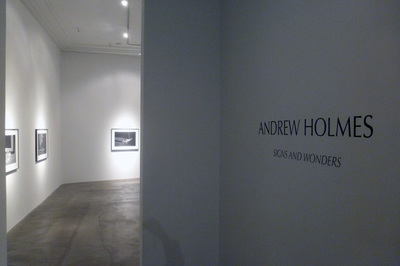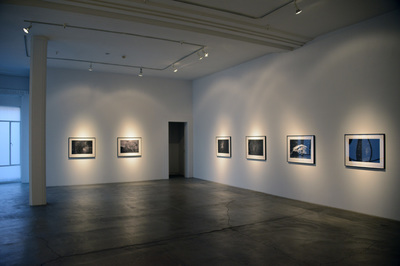|
|
SIGNS AND WONDERS
Ace Gallery 2016 The black and white inkjet print series, Signs and Wonders, seems at first a sharp departure from the imagery characteristic of earlier work: nothing like the trucks, trailers, and motorcycles: no obvious association with blue collar men or working class diversions evident in the drawings. But this fails to see the apocalyptic conclusion in dereliction and despair evident in the failure of the machine both as a symbol, and a way of life in that work. These images are both gothic, and contemporary. They present a serious comment on contemporary society in narrative form. As in the drawings, Signs and Wonders speculates on the effects of technological change on society but this time set in unfamiliar territory. They present a new kind of landscape, home to a disturbed protagonist from a mechanistic environment, drained of life. Externally the natural world is imagined as threatening, not beautiful, and calm. It imagines the universe as dark, as black, as a void. Within the dark there are only points of light. It runs counter to Modernism. It imagines a world of the night, lit only by moonlight. What energy there is minimal: any artificial light is particular, and directed. In these low light images silhouette, surface, texture, and detail are paramount. Gothic goes beneath the veneer of civilization. It deals with unacknowledged subliminal fears underlying common experience. It recognizes the animal that lurks in the human with its intimidation, and violence towards the fragile, and vulnerable. The subliminal and psychological becomes overt. The home is seen not as a castle, a place of safety but a place of fear, and threat: the threat is within. It deals with society’s taboos in the form of metaphor, stylised, and exaggerated for effect. The unknown, the subconscious, and the threat are represented as darkness, as black, in opposition to the Modern where clarity, knowledge, and lucidity is represented by white. In the darkness the shattered, and ruined stands in for the distressed. The calm, and the passive of Modernism are replaced by strong, sudden, conflicting emotions. |








